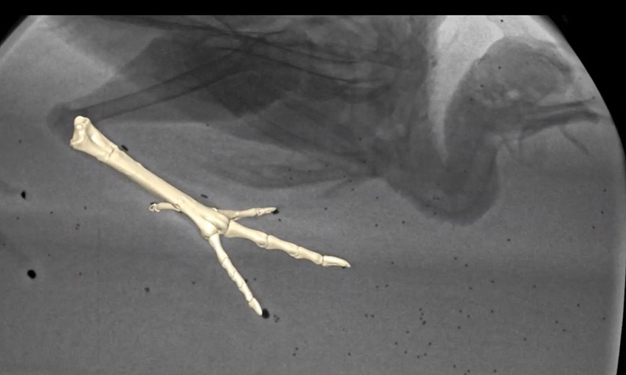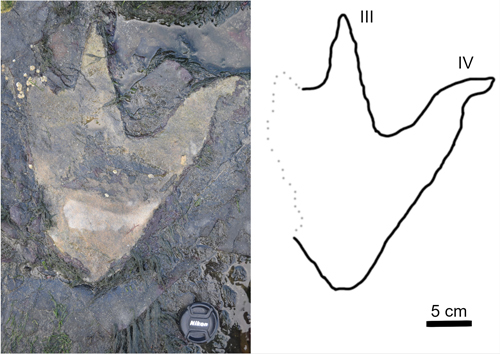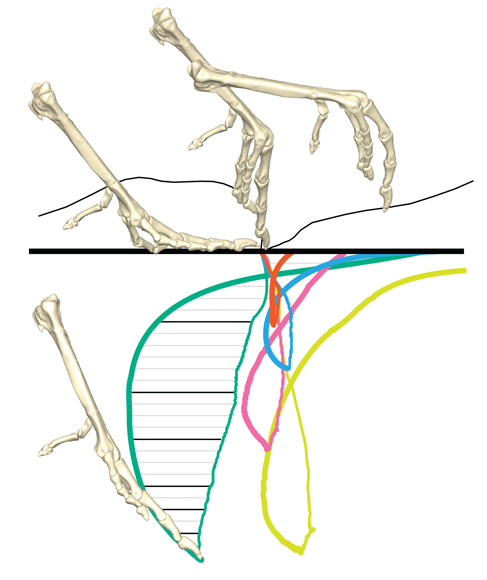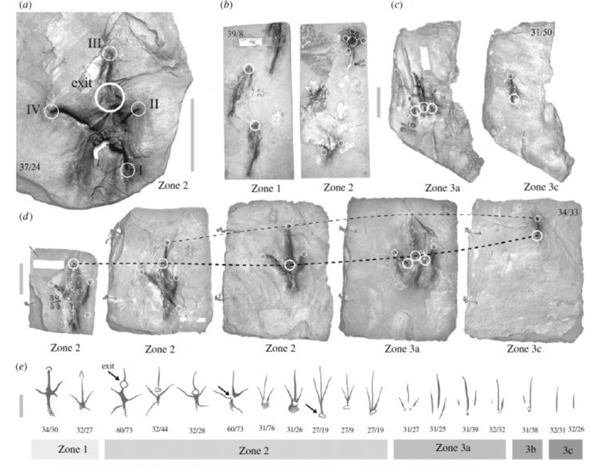Guineafowl Contribute to a Better Understanding of Early Jurassic Dinosaur Tracks
Guineafowl – Walking Like Dinosaurs
Researchers from Brown University (Rhode Island, USA) and Liverpool John Moores University, have plotted the tracks made by living birds in a bid to reveal new information about how some of the early theropod dinosaurs walked. In a paper, published today in Biology Letters, the scientists describe how they analysed the locomotion of guineafowl (Order Galliformes) and discovered that dinosaurs may have moved in a similar way, despite the absence of a long, counter-balancing tail in modern Aves.
A X-ray Imagery was Used to Map the Movement of Bones in the Foot of Guineafowl

Picture credit: Turner et al/Liverpool John Moores University
Retaining Features of Their Non-avian Dinosaur Ancestors
The researchers used X-rays to image and plot the bird tracks in three-dimensions, as the guineafowl walked through a variety of substrates with different properties. The feet of ground-dwelling birds retain many features of their dinosaurian ancestors, after all, living birds are members of the Order Theropoda along with famous dinosaurs such as Velociraptor and Tyrannosaurus rex. The locomotion of the guineafowl permits insights into the complex interplay between anatomy, foot motion (kinematics) and substrate. The results can then be used to assess the tracks made by dinosaurs.
Studying Avian Dinosaur Tracks Provides a Fresh Perspective on Ancient Non-avian Dinosaur Fossil Tracks

Picture credit: Scottish National Heritage
A Looping Pattern Below the Ground Identified
Despite substantial step-to-step variability, the foot consistently moves in a looping pattern below the ground, matching the “looping motion” of dinosaur feet captured in the fossil record from the Early Jurassic.
One of the scientific paper’s authors, Dr Peter Falkingham, a senior lecturer in vertebrate biology at Liverpool John Moores University stated:
“Dinosaurs were moving in very similar ways to modern birds even 200 million years- ago (many millions of years before birds evolved), even though they were quite different, having long, muscular tails, for instance. The similarity of motion, and the similarity of foot shape (three-toed) between dinosaurs 200 million years ago and birds today tells us how successful and versatile that foot has been evolutionarily.”
A Lateral View Showing the Foot Movement and the Looping Pattern of the Toes

Picture credit: Turner et al/Liverpool John Moores University
The scientists report that when a foot sinks into the sediment, a) the sub-surface motion gets recorded and b) the foot has to get out again. Where it exits relative to where it went in can tell us how the foot was moving. Despite substantial kinematic variation, the foot consistently moves in a looping pattern below ground. As the foot sinks and then withdraws, the claws of the three main toes create entry and exit paths in different locations. Sampling these paths at incremental horizons captures two-dimensional features just as fossil tracks do, allowing depth-based zones to be characterised by the presence and relative position of digit impressions.
Analysis of Early Jurassic Theropod Tracks
Picture credit: Turner et al/Liverpool John Moores University
Studying Theropod Dinosaur Tracks
When the fossilised tracks of a small, theropod dinosaur were examined, the scientists found an equivalent looping response to soft substrates. This study, comparing extant and extinct track-makers provides important new data on substrate properties and will assist with the interpretation of dinosaur tracks providing a fresh perspective on these important trace fossils.
This paper provides a new theoretical framework and vocabulary for describing relative positions of entry and exit traces, offering a new way of studying fossil footprints.
For a related article where researchers from Brown University in collaboration with international colleagues conducted earlier research on dinosaur footprints using guineafowl: Walking with Dinosaurs – the Birth of a Dinosaur Footprint.
Everything Dinosaur acknowledges the assistance of Liverpool John Moores University in the compilation of this article.
The scientific paper: “It’s in the loop: shared sub-surface foot kinematics in birds and other dinosaurs shed light on a new dimension of fossil track diversity” by Morgan L. Turner, Peter L. Falkingham and Stephen M. Gatesy published in Biology Letters.
Visit the Everything Dinosaur website: Visit Everything Dinosaur.


